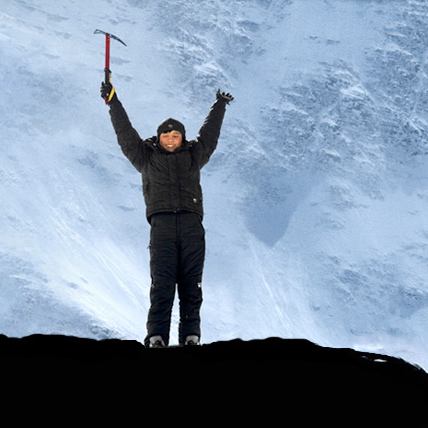Blind Development?
Posted in 2011 Globalization Column The Gnovis Blog
Over the weekend I watched an award winning documentary, Blindsight , which “follows the gripping adventure of six Tibetan teenagers on their journey to climb a mountain in the shadow of Everest.” While all of the reviews featured on the website state that the film is “captivating, inspiring, and breathtaking,” I honestly felt none of those emotions while watching it.
Perhaps it is because I am critically studying development and development projects, that I brought a cynical eye to the project. Let me start with a brief summary of the “plot” of the movie. The movie starts in Tibet, with Sabriye Tenberken, a German woman who travelled to Tibet to found Braille Without Borders . In Tibetan culture, blind people are said to be cursed by sins committed in their past lives and are discriminated against. Sabriye, also blind, founded the organization in order to take in these children and empower them.
After hearing about Erik Weihenmayer’s monumental summiting of Everest (he is also blind), the students and Sabriye invite Erik to come visit them. He accepts, and offers even more – to take the kids climbing. Erik and his team travel to Tibet to lead a “Climbing Blind” team, with the goal of having Sabriye and a selection of her students summit the 23,000 ft. Lhakpa Ri Mountain, which sits in the shadow of Everest.

This is where I started to wonder about the point of this mission- who decided on this goal, and how was the decision made? None of these children had been climbing, ever. This is not to say that they couldn’t do it. This is questioning the goal with regard to safety and an understanding of culture. Westerners have a mentality of needing to summit something; the Tibetans or Nepalese never had the desire to summit Everest before Westerners came into the picture.
The problems seemed to start as soon as the team started climbing the mountain. As the children had not been conditioned, the climb was a learning experience for everyone, and the skill level between the children was drastic. Some children were literally running up the mountain, while a few struggled greatly.
 What I have noted in a previous post is the importance of having a dialogue. The documentary showed that these dialogues can be fraught with tension and not easy to have. However, these dialogues occurred while the Climbing Blind team was already on the mountain, in dangerous conditions. This seemed to symbolize the problems within development: a team comes in ready to go, starts a project, and only begins to have a dialogue with the community when problems begin to arise.
What I have noted in a previous post is the importance of having a dialogue. The documentary showed that these dialogues can be fraught with tension and not easy to have. However, these dialogues occurred while the Climbing Blind team was already on the mountain, in dangerous conditions. This seemed to symbolize the problems within development: a team comes in ready to go, starts a project, and only begins to have a dialogue with the community when problems begin to arise.
There was no dialogue in the beginning on what the initial goals of the project were and what to do in certain situations. Sabriye mentions how all she wanted from this trip was to have the children learn how to climb and develop team skills – she wished they would have all gone down the mountain when two of the students left. However, the Western climbing experts thought that the goal should be summiting, and to have as many of the students summit as possible.
While I was disturbed by the apparent lack of compassion towards the students themselves (one child had to descend sobbing due to physical and emotional issues) and failure to reach a group conclusion about what the goals of this mission were, I do value how the documentary showed that dialogue is necessary in “development” projects, whether in this case personal development or economic development.
